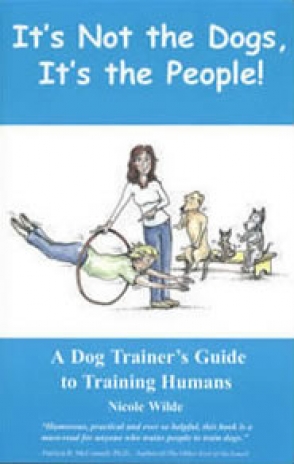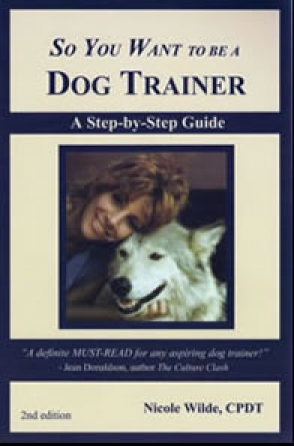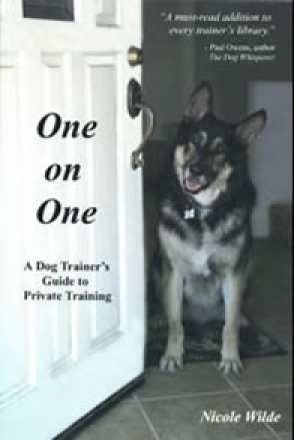Advice, answers, tricks and tips for anyone who shares or is considering sharing their life with these special companions. Packed with photographs.
Gimme Shelter
In the 90s, I spent many hours each week at the Los Angeles city shelters. I began as a volunteer and eventually became a volunteer coordinator, training other volunteers. One comment I heard over and over from the visiting public was, “How can you stand to be here day after day? It’s so depressing!” Well, it’s true that there are aspects of shelter work that can be upsetting and even depressing. But I cannot express how fulfilling volunteering at a shelter can be, on so many levels.
If you are a dog trainer or other canine professional (e.g., dog walker, groomer, vet tech), volunteering at a shelter is the best hands-on education you can get; and it’s free! You’ll deal with a variety of breeds, sizes, and temperaments on a daily basis. Your handling skills will improve immensely, as will your ability to read canine body language. Your own body language around dogs will improve as well. You’ll become better able to make quick judgments as to which dogs might be dangerous, and develop an ability to put fearful dogs at ease. (Tip: If you’re a trainer, rather than announcing that fact from the get-go, have the attitude that you’ll do anything that needs doing. Fit in and learn the ropes first, then work up to offering your training skills.)
If you are not a professional, but simply someone with a love in their heart for dogs and a desire to help, shelter work may be a good fit for you. Most shelters have a program to train new volunteers; at the least, you should be taught the shelter’s rules and regulations, and safe handling procedures. Depending on the shelter, and your desired level of hands-on involvement, your activities might include:
1. Taking dogs out for walks. Walks give the dogs crucial breaks from confinement, keep them calmer by providing exercise (good for you, too!), are mentally stimulating, and help to keep the dogs sociable, and therefore more adoptable. Walks are also an excellent opportunity to practice training skills.
2. Sitting in the pens. Some dogs are too timid or fearful to go out for walks just yet. Simply sitting quietly with them, helping them learn that people can be trusted—or simply helping them over the trauma of suddenly finding themselves in a strange, new environment—can make a huge difference in their chances of being adopted. (Letting the dogs warm up to you at their own pace is crucial.) Pen-sitting is also a great shelter activity if you have limited mobility.
3. Adoption counseling. Some shelters have staff members who counsel potential adopters, while others have volunteers who perform the task. Either way, you might be allowed to bring dogs out for the public to interact with. This is a great chance for you to socialize with others, improve your people skills, and help to match the right dog to the right family.
4. Contacting breed rescues. An amazing number of purebred dogs are euthanized in shelters every day. During my time with the Los Angeles city shelters, I called purebred rescues to come and bail dogs out on almost-daily basis. Contacting rescue groups (which are not limited to purebreds, by the way) is an easy, hands-off approach to saving lives, and takes very little time out of your day.
5. Adoption events. Many shelters bring dogs out into the community for adoption events. As a volunteer, you would stand with an assigned dog and tell potential adopters all about the wonderful dog you are handling. This is a rewarding way to be directly responsible for a dog finding a new home.
I won’t lie; there are aspects of shelter work that can be challenging. The most difficult is becoming emotionally attached to a dog and then finding that the dog has been euthanized. I know, it sounds awful, and it is. But—and this is a big but—think of all the dogs you could help. (There are shelters that have much lower euthanasia rates than city and county shelters, and, some city/county shelters have higher adoption rates as well.) Although I had my share of difficult moments, I also had many, many moments of pure joy at seeing a dog I had taken a personal interest in find a loving home. Just think how good it would make you feel to know that you were personally responsible for saving a dog’s life.
I received a few photographs via email recently from a couple I had helped to adopt a shelter dog six years ago. They were writing to let me know that the dog was still healthy and happy, and that they were grateful for the assistance in finding their beloved fur-kid. I smiled as I looked through photos of Bailey grinning from the deck of their boat, chasing a ball in the back yard, and being cuddled on the couch. You just can’t beat that. Go check out your local shelter’s volunteer opportunities—you’ll be glad you did.










